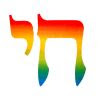I could not help but notice how different ideologies are mix-matched here: Hungarism -- Hungarian nationalism, meaning they want the old territories back; anti-Semitism; ant-democratic ideology...One Hungarist "genius" -- I think it was their leader or something -- said that they don't want democracy and all Jews are liars. Well, I don't really see either the connection or the consistency, not to mention the generalization fueled by hatred. I bet this guy has not met any Jew so far but he seems to "know" the unquestionable truth.
It is ridiculous and scary at the same time. I hope this ideology does not attract too many people but I also think that unfortunately there are groups of people who are easy to influence: teenagers, the unemployed and the less educated. The mixing of the ideas and the lack of consistency which is, in turn, presented as a complete ideology, is a laughing matter. But I don't know where this all leads and I can only hope that people know better.
The scary part is how it is not a shame anymore to be explicitly extremist: publicly and even proudly wearing/showing symbols of hatred and hostility ... There is a new symbol which seriously resembles the swastika. It is not that but almost ...
 (this is a sticker with the "old Hungary" map with the colors of the Arpad dinasty, the first royal dinasty in Hungary, their symbolism has been revived by the nationalist movements in the beginning of the 20th century and used since then by the extreme rightists; and the thing inside of it that -- maybe I am wrong, but -- strongly resembles to the swastika ... )
(this is a sticker with the "old Hungary" map with the colors of the Arpad dinasty, the first royal dinasty in Hungary, their symbolism has been revived by the nationalist movements in the beginning of the 20th century and used since then by the extreme rightists; and the thing inside of it that -- maybe I am wrong, but -- strongly resembles to the swastika ... )Interestingly, someone suggested that the Arpad-colors should be considered a prohibited symbol because in World War II the Hungarian "Nazi" party has used it as their flag but the law did not go through. The reasoning was that the Arpad-colors are an ancient historic treasure and as such can not be prohibited...




No comments:
Post a Comment